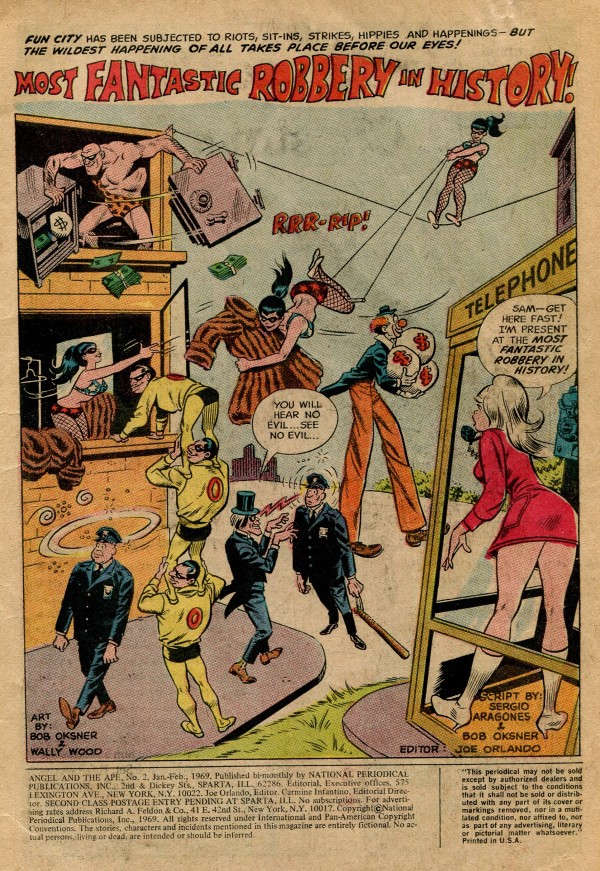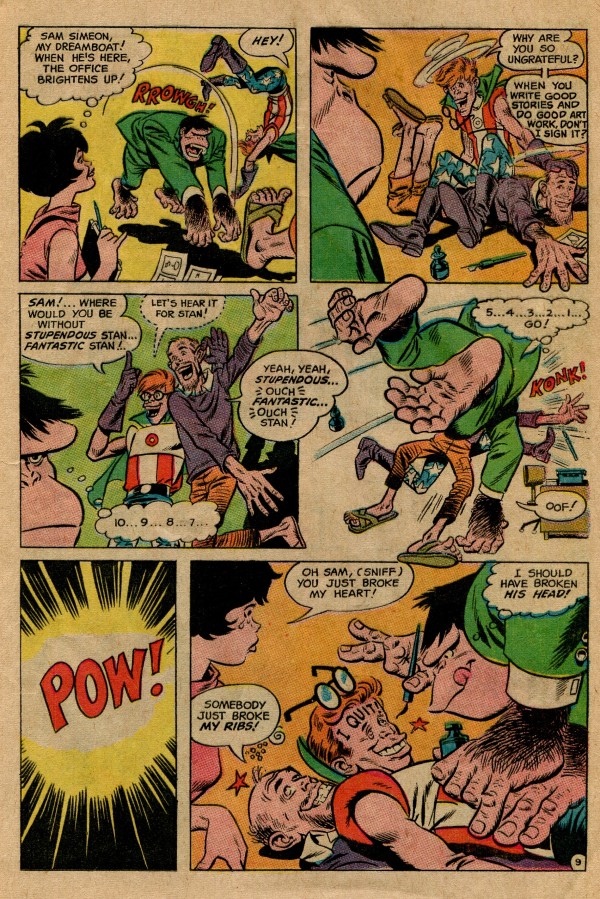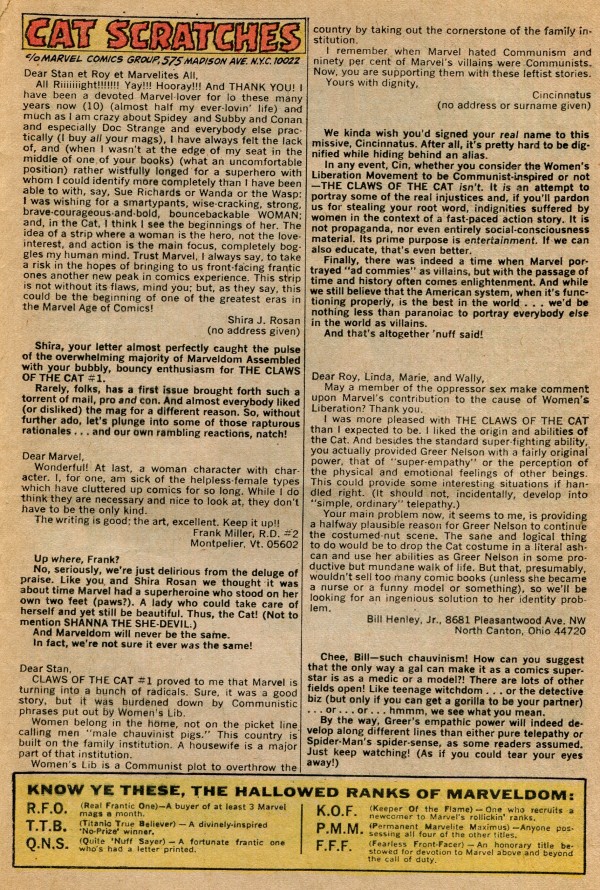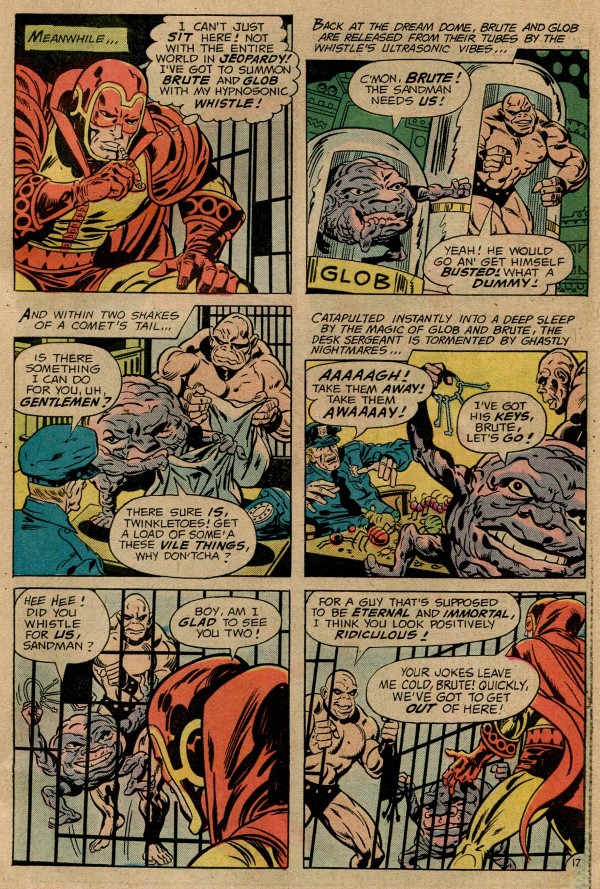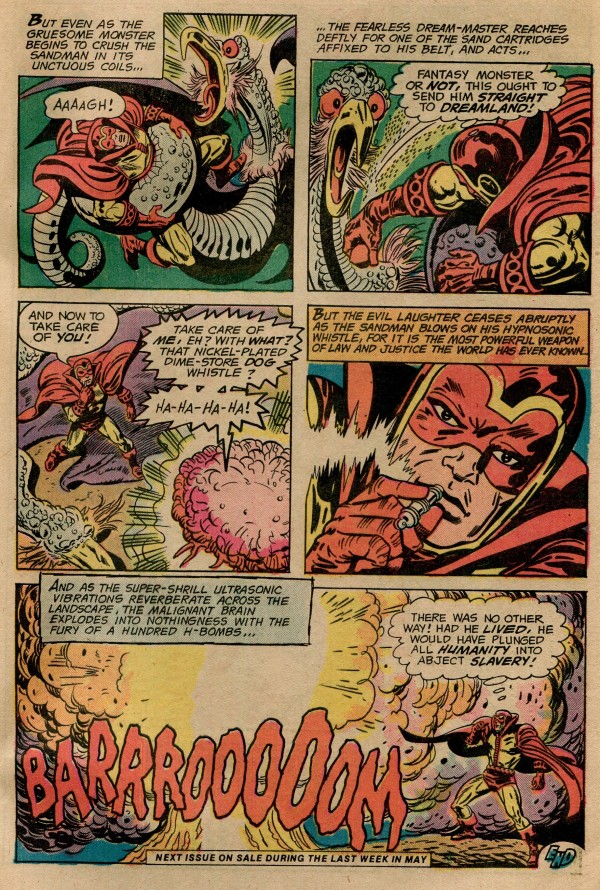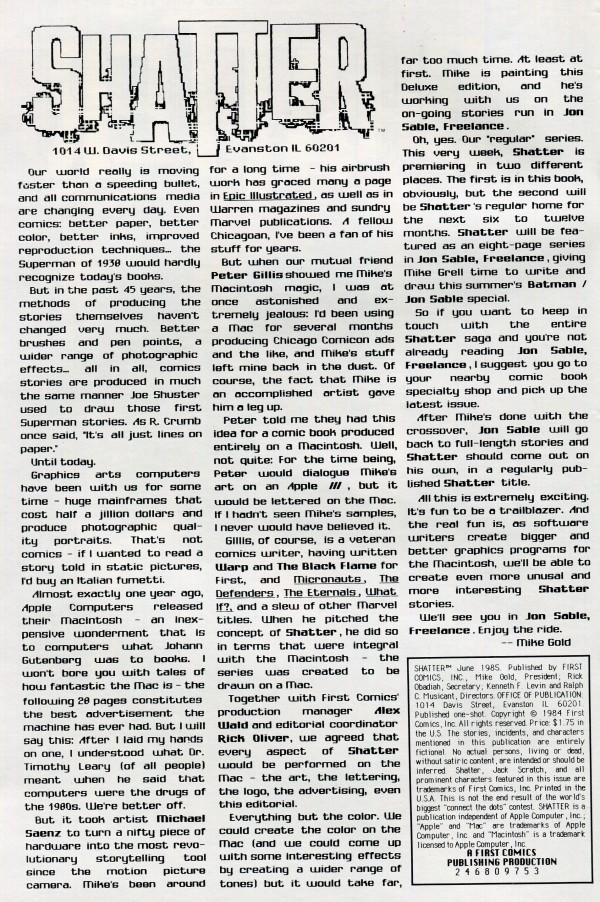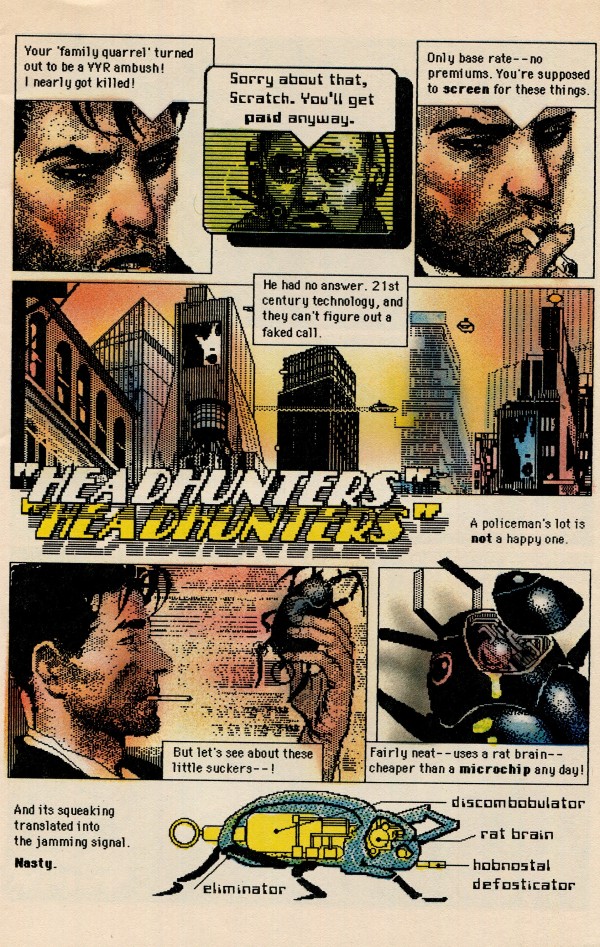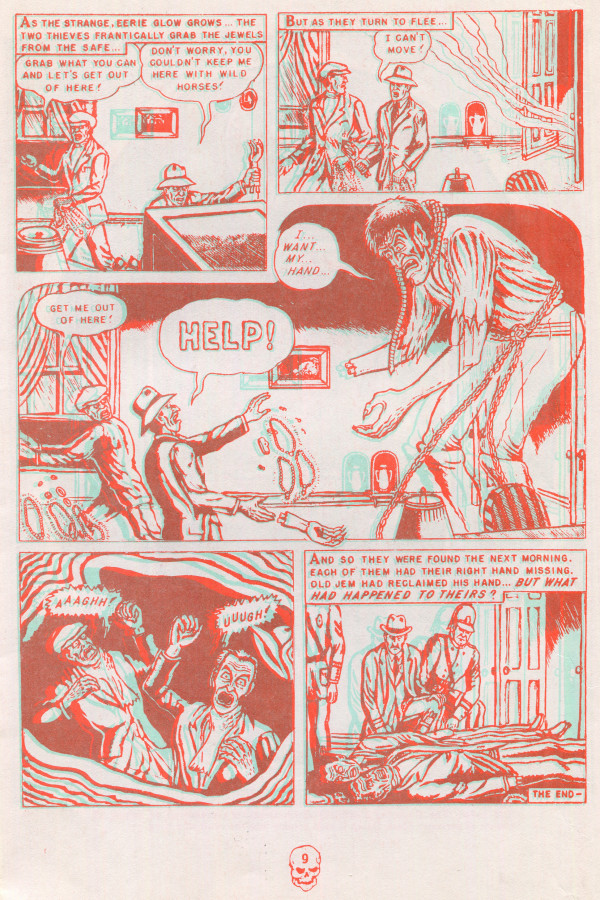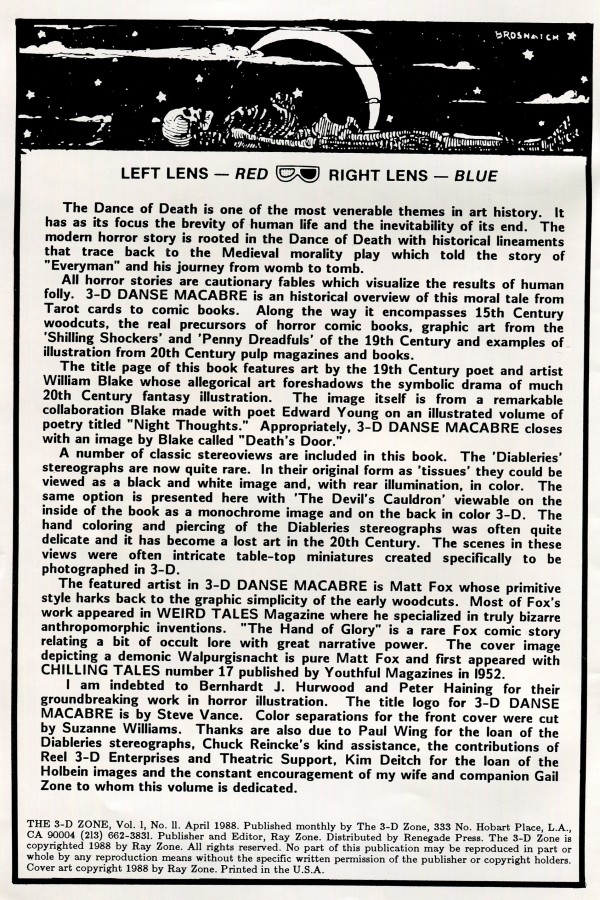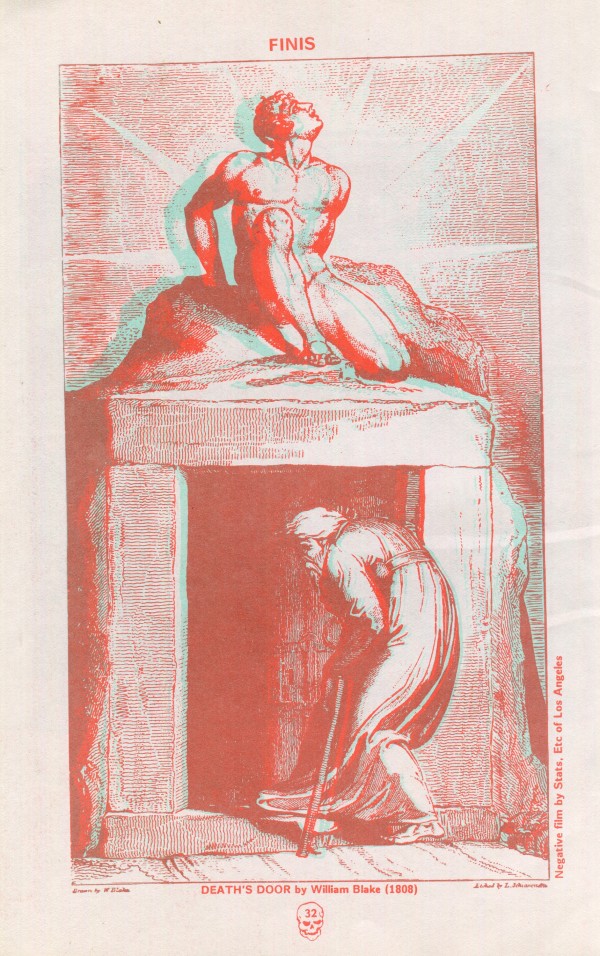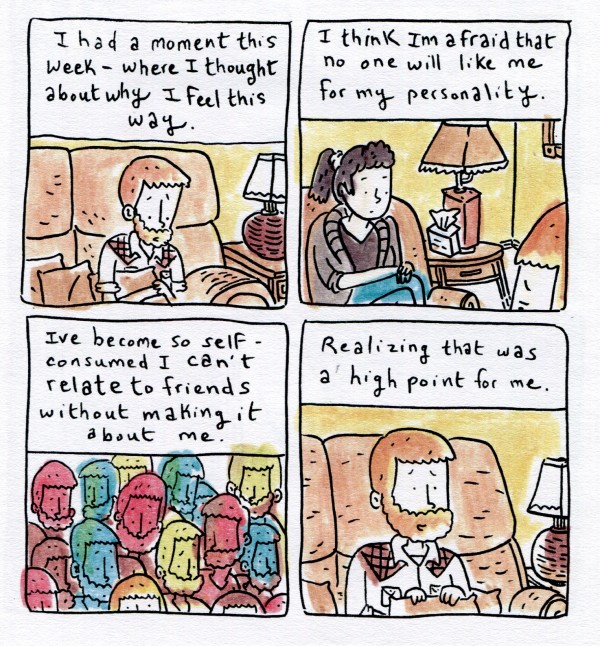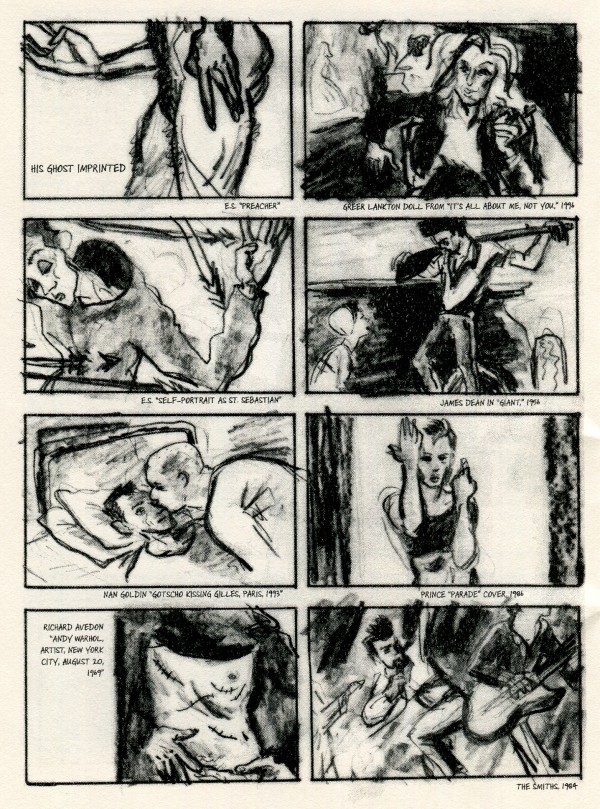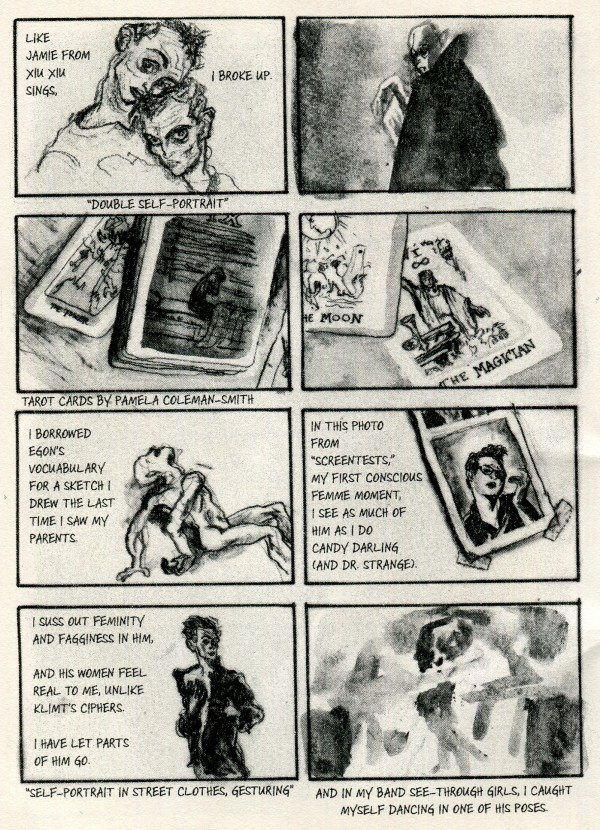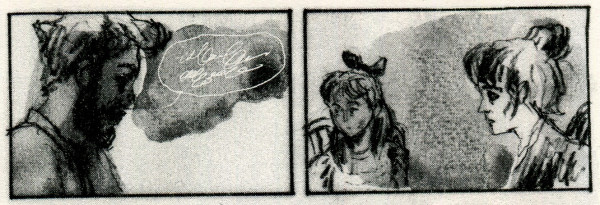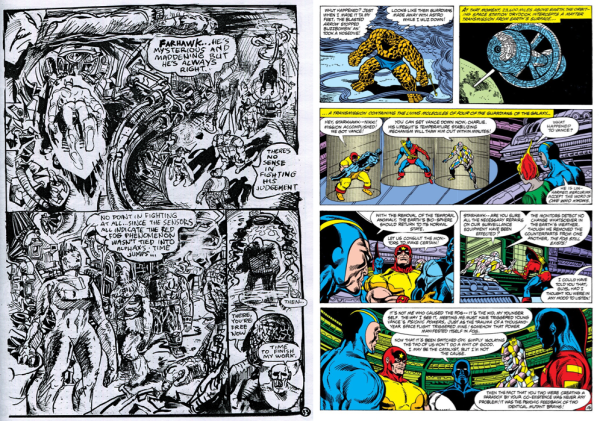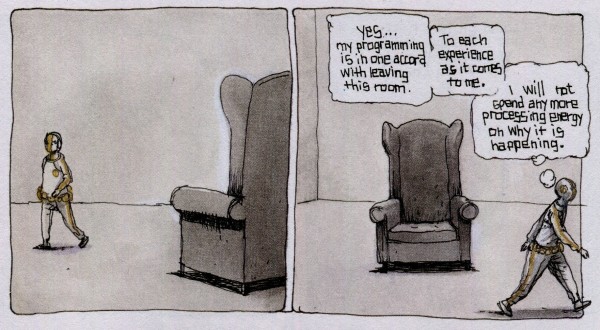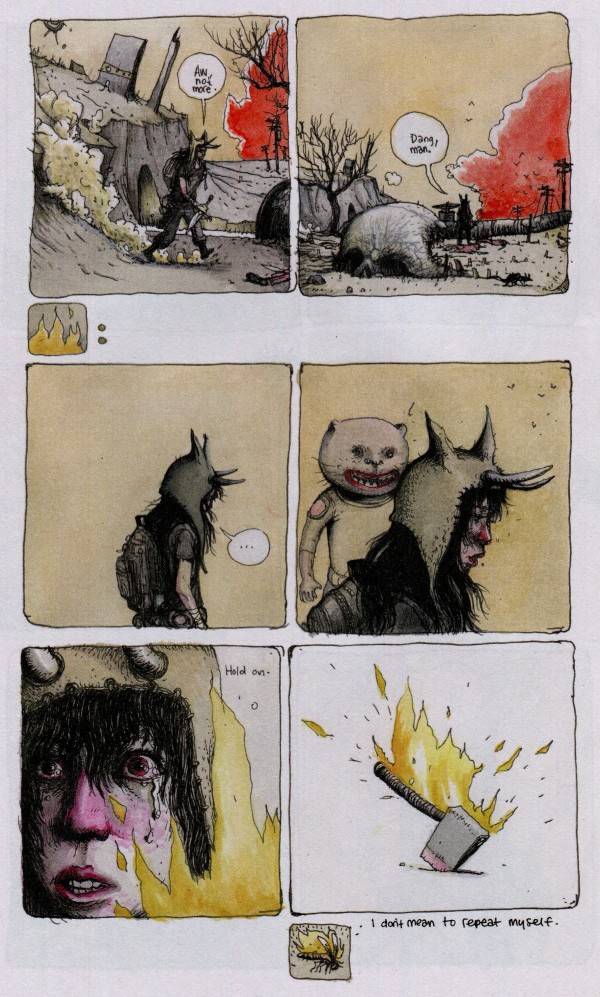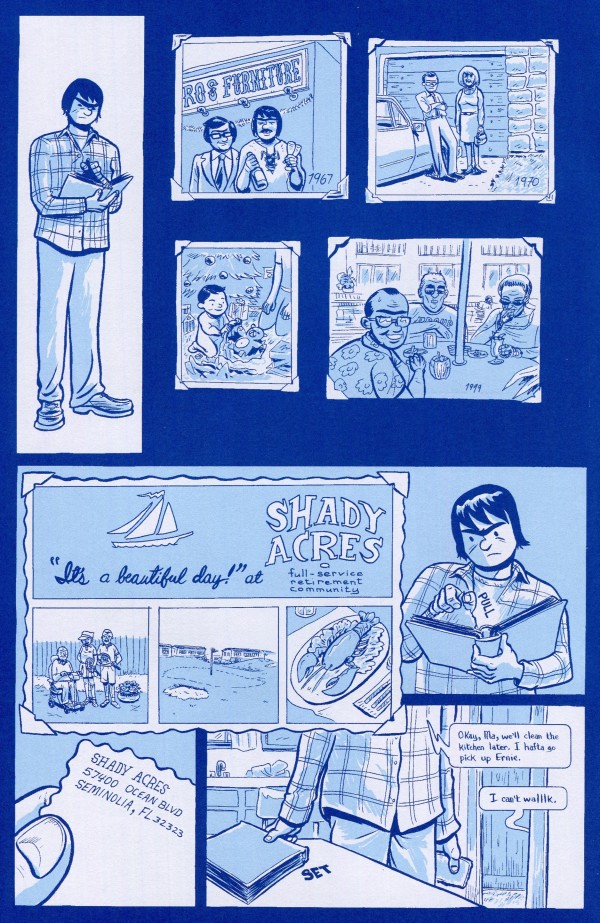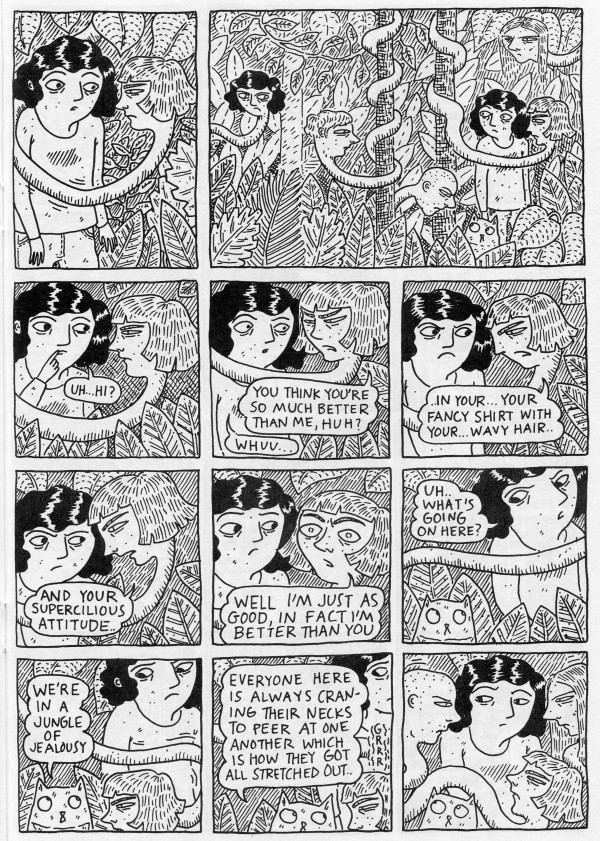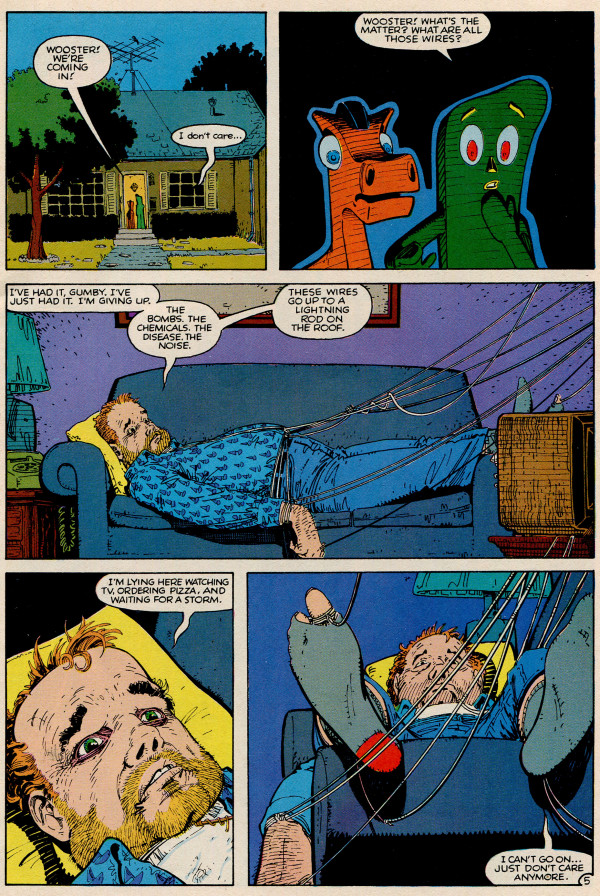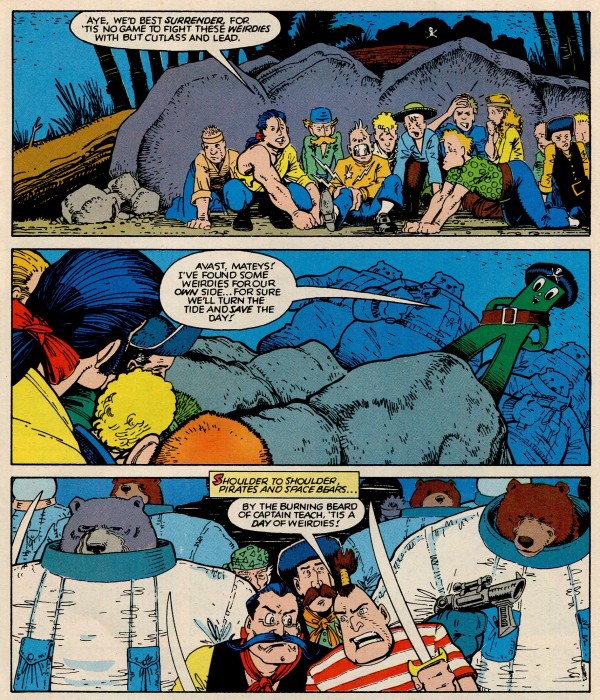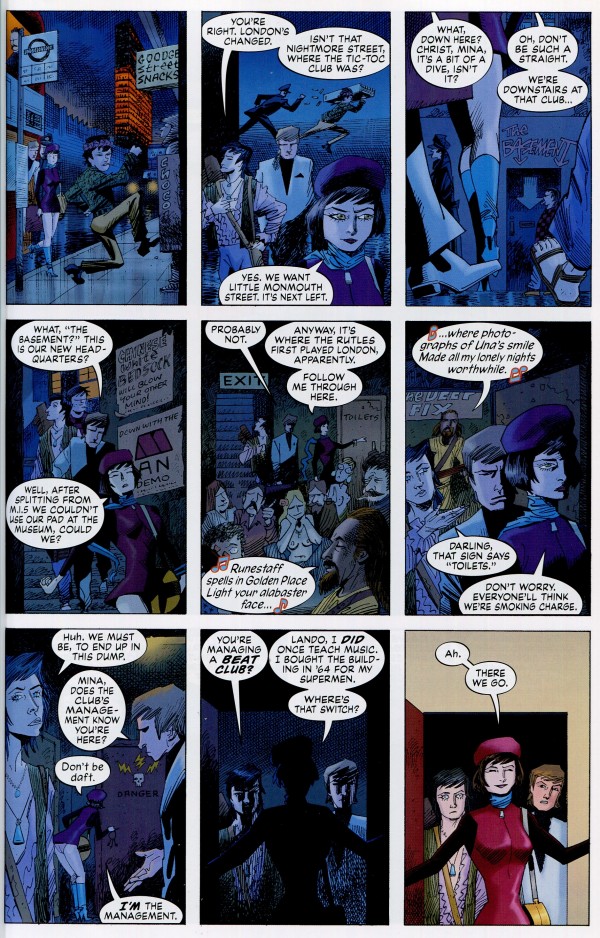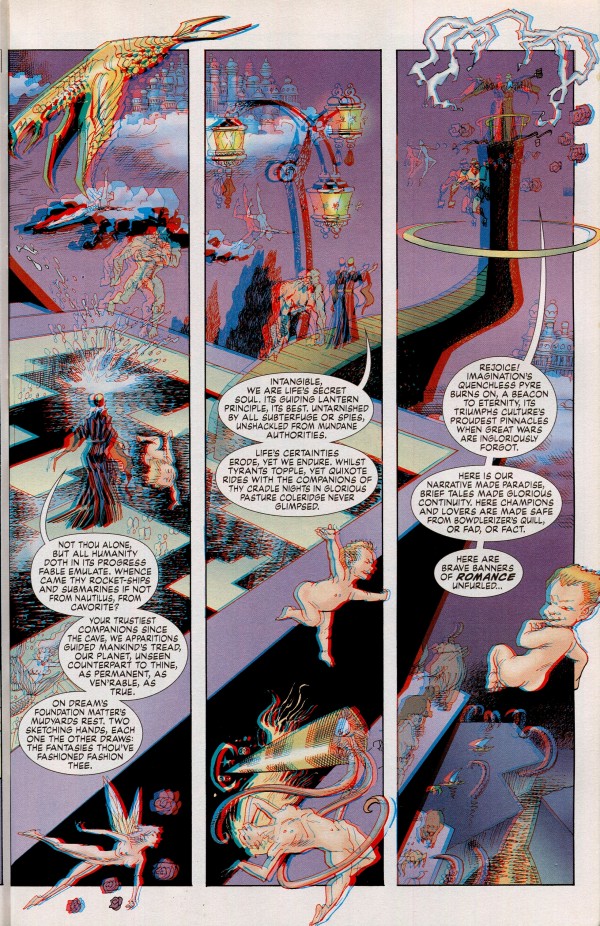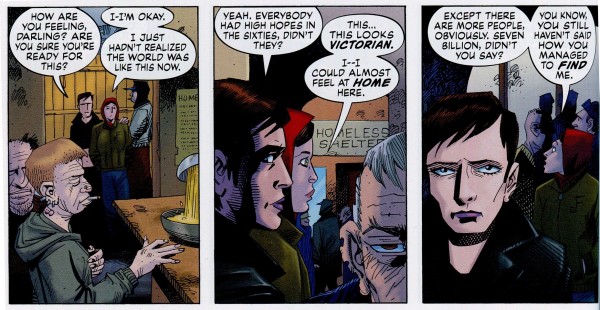What We’re Reading: Old Comics From Mom’s House

With the holidays behind us, I came home with a box of comics that I’d completely forgotten that my mom was storing for me. Part of the fun of reading comics is the sense of history one can get from visiting just about any comic shop. For a number of reasons (youth of the medium, considerations of “collectibility,” fewer gatekeepers to publication), most of the evolutionary tree that led to the modern American comic is still accessible to anyone willing to spend a few hours looking.
Here are five of the most notable relics from that forgotten box of comics, arranged in chronological order of their release.
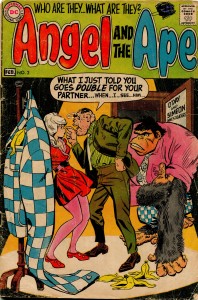 Angel and the Ape #2 by Sergio Aragones, Bob Oskner, and Wally Wood (DC, 1969)
Angel and the Ape #2 by Sergio Aragones, Bob Oskner, and Wally Wood (DC, 1969)
Bob Oskner is known for drawing long runs of Adventures of Bob Hope and Adventures of Jerry Lewis and later, after demand for humor comics died, a notable amount of work on Supergirl. Positioned somewhere in between those is this detective/humor/comic-about-comics thing. Angel O’Day and Sam Simeon are detectives, and while Angel wants to track down the Bikini family of crime and circus performance, Sam is more concerned with his cartooning career.
The detective drama feels like it comes straight out of a Hanna-Barbera cartoon, what with its slapstick and two-dimensional characters. It’s much prettier, though, due to Oskner and Wood’s immaculate art. The linework and page layouts are slick and clear, and the character design is stylish and well-considered.
There’s a strangely vicious undertone to Sam’s cartooning career, though. He works for Stan Bragg, an obvious stand-in for Marvel’s Stan Lee, famous for his hyperbolic bragging.
Stan Lee kept his name at the top of every Marvel comic well into the ‘90s, and here’s Stan Bragg taking credit for Sam’s work. He lives for the fawning of his assistant, a possible representation of Marvel’s Roy Thomas. 1969 was the year that Marvel finally escaped from the yoke of their distributor, Independent (who also happened to own and distribute DC comics), so maybe the people at DC were a bit scared of their competitor.
On the other hand, the comic shows DC editor Mort Weisinger (who was famously almost pushed out a window by freelancer Dan Cameron) as a gorilla, so who knows? This is a weird comic.
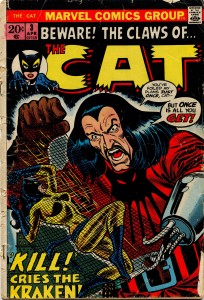 The Cat #3 by Linda Fite, Paty Greer, and Bill Everett (Marvel, 1973)
The Cat #3 by Linda Fite, Paty Greer, and Bill Everett (Marvel, 1973)
Whereas Angel O’Day is a somewhat ineffective detective in a very short skirt, Marvel tried to establish an entire line of comics about female characters and targeting female readers just a couple years after Angel and the Ape tanked. According to the aforementioned Roy Thomas, Stan Lee “wanted to do some books that would have special appeal to girls. We were always looking for way to expand our franchise. My idea…was to try to get women to write them”. It’s an idea that unfortunately still hasn’t quite gotten off the ground today, with 2014 being a year full of ups and downs for women in comics.
In 1972, The Cat was released alongside Night Nurse and Shanna the She-Devil. None ran for more than five issues. This particular issue is perfectly serviceable, neither better nor worse than most of the other 41 comics Marvel released that month. The art by Paty Greer and Bill Everett leans heavily toward Everett’s particular tics (such as his notable eyebrows), but the claustrophobic ink work and the dark colors create a strong mood that was distinct among superhero comics. If the story was fine and the art was good, why did The Cat have such a short run? Some hints might be found in the letters page.
Of particular note is the letter from “Cincinnatus,” which reads:
“Dear Stan,
CLAWS OF THE CAT #1 proved to me that Marvel is turning into a bunch of radicals. Sure, it was a good story, but it was burdened down by Communistic phrases put out by Women’s Lib.
Women belong in the home, not on the picket line calling men ‘male chauvinist pigs.’ This country is built on the family institution. A housewife is a major part of that institution.
Women’s Lib is a Communist plot to overthrow the country by taking out the cornerstone of the family institution.
I remember when Marvel hated Communism and ninety per cent of Marvel’s villains were Communists. Now, you are supporting them with these leftist stories.
Yours with dignity.”
It’s sad how similar the argument to some of the commentary on women in comics and video games today that basically amount to, “I like things the way they are!”
And don’t pass over the letter of one Frank Miller from Vermont. He notes that, while helpless female types don’t have to be the only kind of women in comics, “they are necessary and nice to look at.” This is Frank Miller of Sin City fame at 16 years old.
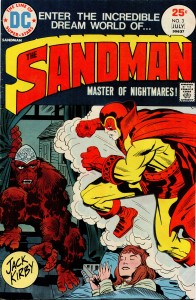 The Sandman #3 by Michael Fleisher, Ernie Chua/Chan, and Mike Royer (DC, 1975)
The Sandman #3 by Michael Fleisher, Ernie Chua/Chan, and Mike Royer (DC, 1975)
Supposedly written by Michael Fleisher, who author Harlan Ellison has called crazy, certifiable, twisted, derange-o, bugfuck, and lunatic, I have a hard time believing this comic wasn’t written by a kid.
An evil count served by zombie gorillas fakes a suicide to avoid death from angry villagers. Taken to a scientist by his zombie gorillas, his brain is saved but promptly kills the scientist with brain powers. The brain invades a girl’s dream in order to get the girl’s dad’s science plans to construct a new body. The Sandman, guardian of dreams, is alerted to the intrusion and stops it. The brain floats out of its cage, absorbs electricity, and attacks the city. Sandman tries to stop it, but he’s put in jail.
His allies (who he keeps trapped in glass until he needs them) free Sandman, who then…
…destroys the evil brain “with the fury of a hundred h-bombs.”
Pure madness. Unreviewable.
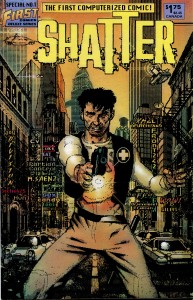 Shatter #1 by Michael Saenz and Peter B. Gillis (First, 1985)
Shatter #1 by Michael Saenz and Peter B. Gillis (First, 1985)
Today, many comics are drawn on computers. Most are colored and lettered on computers. In the foggy year of 1985, though, everything was done on paper and photostat machines. Everything, that is, except for Shatter, “the first computerized comic!” Your mind is already blown, right? Please allow artist Michael Saenz to educate you on the Apple Macintosh:
The story itself is bland. Written by Peter B. Gillis (of the cult series Strikeforce: Morituri), it follows Sadr al-din Morales, a pretty Blade Runner looking dude, around an advertising-heavy Blade Runner looking world. Parts of the plot are contrived and overly convenient, but it wasn’t the story that was on display here; it was the pixels.
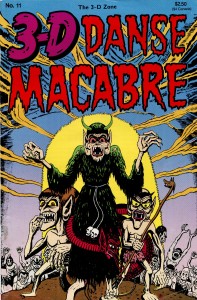 The 3-D Zone #11, “3-D Danse Macabre” by Matt Fox, Ray Zone, William Blake, et al. (3-D Zone, 1988)
The 3-D Zone #11, “3-D Danse Macabre” by Matt Fox, Ray Zone, William Blake, et al. (3-D Zone, 1988)
Speaking of cutting edge technology, here’s some honest-to-goodness, red and blue 3-D. The contents of this fine piece of horror were selected and rendered three dimensional by the recently deceased Ray Zone. (Study Group Magazine did a fine write-up of Zone in their recent 3-D issue, which I can’t recommend enough.) The cover and actual comic contents are by artist Matt Fox, whose “primitive” style graced the pages of the occasional ’50s horror comic. Make sure you have your glasses on before viewing the grisly denouement:
The real treat here, though, is the time capsule sense of Zone’s approach to the comic. Compiled before the internet, it’s meant to give a full explanation of the danse macabre:
In addition, Zone samples a range of artwork exploring the theme, putting them all through his painstaking 3-D process. Here, for instance, is the work of William Blake:
The idea that a comic had to explain itself and stand on its own is an approach that is largely absent from comics these days. It was effective, though, resulting in a meaty slab of culture worth multiple reads.
What meaty slabs of culture did you all get over Christmas?
What We’re Reading: Handbook, Unholy Shapes, & Mr. Incompleto

I always thought I felt ambivalent about comic book autobiography. It’s only recently that I’ve come to realize that my ambivalence is only toward a certain kind of autobiography, which cartoonist Mike Dawson has helpfully classified as “Sad Man Pulls at Himself.” According to Dawson, the Sad Man is “unloved by the women he desires, surrounded by possessions that remind him of childhood, thinking about his penis, and sometimes drawing about it.” Up until the 21st century (and probably beyond), the Sad Men have dominated and defined comic autobio. Luckily, it seems their time has passed. Here are three autobiographical comics that strike out from the well-worn Sad Man territory.
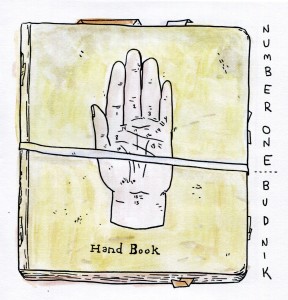 Handbook #1 & 2 by Kevin Budnik (2014)
Handbook #1 & 2 by Kevin Budnik (2014)
Budnik composes his journal comics by juxtaposing events of his contemporary life with journals from his time dealing with anorexia and anxiety in 2012. As a daily journal, each page stands as its own discrete narrative unit, relating a humorous anecdote, a breakthrough in therapy, and so on. Reading them daily (which you can do here), each one offers a satisfying bite of life. However, laying them out in a book has the effect of encouraging readers to look at sequenced pages as commentary on each other.
It’s this effect that has me enjoying Handbook more than a lot of journal comics. By separating himself into two people—2012 Kevin and 2014 Kevin—and implying a relationship between them by splicing them together, Budnik creates a dialogue with himself that tempers the meandering navel-gazing that most journal comics are heir to. If 2012 gets too serious, we can have a 2014 “gag” strip, and if 2014 gets too flippant or quiet, there are serious years to look back on.
One of the most touching strips comes from Budnik’s time in therapy:
With Handbook, Budnik turns autobiography into an outward-looking process. He is writing to the Kevin of 2012 just as much as he is writing to himself and his audience.
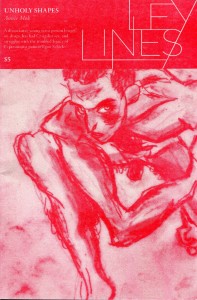 Unholy Shapes by Annie Mok (2014)
Unholy Shapes by Annie Mok (2014)
Where Budnik is in talks with himself, Annie Mok is in talks with Egon Schiele. Unholy Shapes traces the lives of Mok and Schiele and how they intersect, but the most effective moments come from where they diverge.
There are parts of Schiele’s career that seem to parallel Mok’s, such as envisioning projects too large to complete. However, as he gets older, as he paints nude children without their parents’ permission, as he leaves his mistress for a rich woman, Mok draws parallels between him and artists like Woody Allen or R. Crumb—men who, proclaimed as geniuses, seem to get passes on criminal actions and questionable or offensive art.
In the end, Schiele and his art remind Mok of her childhood fears and trauma, but she still sees echoes of his art all around her (and even in herself).
Mok’s art in Unholy Shapes is alternately smudgy and sharp, loose, layered, and perfect for the subject matter. In a book about artistic influence, it’s neat to see her incorporate the Santoro coloring method she’s talked about; bits of Emily Carroll are also visible, like in this word balloon:
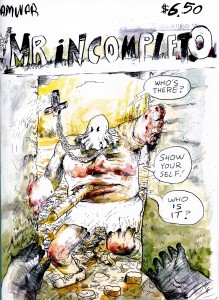 Mr. Incompleto by Josh Bayer (2014)
Mr. Incompleto by Josh Bayer (2014)
Josh Bayer’s comics look like they were drawn on notebook covers during your least favorite class (assuming the student was influenced by early 20th-century newspaper strips). There’s a hectic, scratchy energy to Bayer’s lines. There’s a certain sense of pubescent discomfort to it too; the men in the book (and the lone woman) bulge with uncomfortable masculinity.
The story is a remix or “cover” of Marvel Two-in-One #69. Both versions (Bayer’s and the original) are about a superhero coming from the future to help his younger self. In Marvel Two-in-One, the man from the future helps his younger self come to terms with his superpowers. In Mr. Incompleto, the young version crucifies his father on a tree, and the two time-tossed men use their powers to wipe the bloody event from their brains.
Bayer has said that “…doing the…cover comics is just some weird device that measures how uncomfortable I am with telling a real autobiographical story. Each time I do a [cover] story, I let whatever fragments I remember from around that time enter the story.” So where Budnik talks to his young self and Mok looks at the life and work of an artist, Bayer filters his feelings through ’80s superhero comics. Does it reveal much about the “facts” of Bayer’s life? Not at all. However, it’s effective at capturing a mostly invisible yet seething, adversarial masculinity that young people might experience. Like the heroes of Mr. Incompleto, young men often block or ignore the violence that comes from that masculinity. But just like the father left hanging from a tree, that violence persists.
If you were to look into your past, which version of yourself would you want to talk to? Whose works have shaped and altered your life, and whose could you speak through?
What We’re Reading: It Will All Hurt, Rubber Necker, Debbie’s Inferno, Gumby

There were a few years of my twenties where I imagined myself to be on the forefront of a cultural war, and I was fighting for the validity of the comic book. “Graphic novel!” I might shout. “Mature themes!” I would rail. I filled my bookshelves with collected editions and hid my longboxes of monthly comics (floppies, pamphlets, stapled virions of trash culture) in the closet.
Luckily, I’m older now, and I can accept that comics can be many things: long or short, fiction or not, fast or slow, dense or breezy. In a world where short prose has to be lodged between magazine articles or tarted up as longer books (and priced as such), I’ve learned to celebrate the single comic issue. In exchange for a few dollars, I get an objet d’art that I can roll up in my pocket, store in a box, hang on a wall, and, above all, read. Here are some of the latest reasons for my celebration.
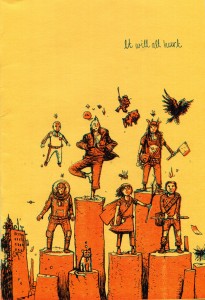 It Will All Hurt #1 & 2 by Farel Dalrymple (Study Group Comics, 2013-present)
It Will All Hurt #1 & 2 by Farel Dalrymple (Study Group Comics, 2013-present)
Farel Dalrymple’s ostensibly ongoing series is a poetic and flowing exploration of grappling with the world’s failure to align with what you imagined it could be. It’s at turns hopeful and dark, casual and ornate, fantastic and mundane. Dalrymple’s work is often dreamily told, and exposition is limited to the superficial classification of places and objects like one might encounter in a video game guidebook—that is, he’ll tell you what a character is called, but he’s not going to dump the whys and hows on you. He’s taking you on a ride, and he’s asking you to settle in and come with.
Scenes dissolve from one into another, leaking together as characters watch others on screens or hear them in their headphones. This blending extends to marks made on the page as well; words and designs and lonely ellipses hover outside of the panel borders. The white gutters, normally off limits in comic storytelling, become another place to play in, jump through, and float along.
The printing on these issues is what keeps pulling me back. The toxic neons of the cover give way to oversize pages filled immaculate watercolors that alternately bloat and burn in the sick, weird world that Dalrymple has created. Even the texture—thin but supple newsprint—feels like something you’d find after society has moved on.
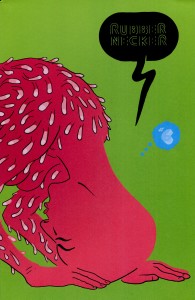 Rubber Necker #5 & 6 by Nick Bertozzi (self-published)
Rubber Necker #5 & 6 by Nick Bertozzi (self-published)
The one-person anthology used to be an apex of achievement for cartoonists. Chester Brown’s Yummy Fur, Daniel Clowes’s Eightball, and Chris Ware’s Acme Novelty Library, for instance, served as spaces for those cartoonists to explore a number of ideas, approaches, and narratives while still marking out a space that was expressly their own. These anthologies serialized stories that were eventually collected as “graphic novels,” and as more publishers pursued graphic novels without the testing arena of serialization, the one-person anthology dropped out of the spotlight.
Luckily, Nick Bertozzi hasn’t abandoned the format. In between making historical graphic novels and teaching at the School of Visual Arts, he’s been putting out issues of Rubber Necker since 2003. Each issue contains part of the serialized “Drop Ceiling,” perhaps the closest Bertozzi comes to the “sad man” genre that populated the anthologies of the nineties and aughts; “Drop Ceiling” is more engaging, though, as Bertozzi allows space for a variety of characters, a range of emotions, and even a bit of plotting that I would almost call “rollicking.”
The rest of the issues are filled out with a variety of gag strips, fake ads, weird meditations, and touching autobio. The colors are carefully considered and serve the stories well; “Drop Ceiling” has a shifting monochrome, and the shorts range from flat pastels to purposefully off-register printing.
An anthology is always a gamble, and the quality is guaranteed to fall within a range. With Rubber Necker, the range is “pretty good” to “artfully touching,” which is a great range.
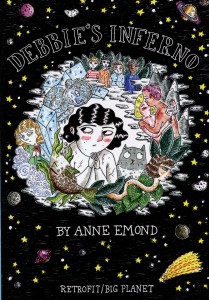 Debbie’s Inferno by Ann Emond (Retrofit, 2014)
Debbie’s Inferno by Ann Emond (Retrofit, 2014)
Allegory seems hard to do well. The blunt, one-to-one metaphorical ratio lends itself to obvious and heavy-handed stories. Anne Emond’s Debbie’s Inferno is an exception to that, though. Debbie and her cat explore the landscape wrought from her worries (The Jungle of Jealousy, The Land of Cold Fish, The Mountains of No Atmosphere), and Emond renders the extreme terrain with the same sure line as Debbie herself is drawn in. This effect manages to make the landscape simultaneously fantastical and mundane, which matches the effect these sorts of feelings have on people—they are huge, affecting, and devastating, but they’re also familiar and universal.
The scale of these feelings can be overwhelming, and the “sad man” genre of comics mentioned above often ratcheted that scale into a sort of mopey selfishness that cast everything outside of the protagonist in a gray supporting role. By acknowledging the universality of these feelings, Debbie’s Inferno invites readers to pass through the anxieties at Debbie’s side, with Debbie acknowledging how difficult life can be while her cat urges her (and us) along so that we can rejoin the world.
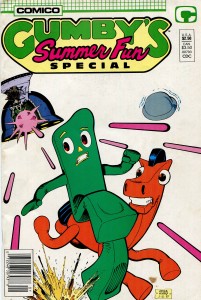 Gumby’s Summer Fun Special by Bob Burden & Art Adams (Comico, 1987)
Gumby’s Summer Fun Special by Bob Burden & Art Adams (Comico, 1987)
Coming at you from the summer of 1987, Gumby’s here to take you far away from those weighty feelings of depression and fear!
(It gets more fun. I promise.)
With art by Art Adams, who, in 1987, was fresh off of drawing wildly popular issues of X-Men and New Mutants, and written by Bob Burden, who is maybe most famous for doing a comic that was adapted into the 1999 movie Mystery Men with Ben Stiller and Janeane Garofalo, this Gumby special is a weird thing.
Adams pretty much spawned the hyper-rendered drawing style that went to dominate superhero comics throughout the nineties and beyond, and seeing the sleek, simple form of Gumby dashing around with pirates, aliens, and robots drawn in Adams’s traditional, line-filled style creates a strange dissonance.
It’s not necessarily helped by the loping gait of the story. The plot doesn’t escalate and resolve in a traditional way. Instead, it just kind of jumps along from one oddity to the next. It’s almost picaresque in the way Gumby and Pokey tumble along from one set piece to the next.
Luckily, no one goes to Gumby’s Summer Fun Special for a tight plot and sleek visuals. They go to Gumby for the weirdies, and that’s exactly what Burden and Adams deliver. It’s a palate cleanser and an empty calorie. It’s that stapled virion of trash culture that I found for a dollar at an antique store, and the novelty is worth every penny.
Are comics the last refuge of cheap culture to consume? What are your cheap not-quite-guilty pleasures?
What We’re Reading: League of Extraordinary Gentlemen, Part 1

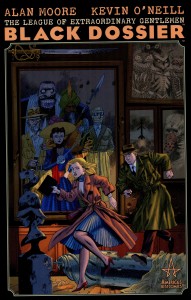 League of Extraordinary Gentlemen (Volumes 1 & 2, The Black Dossier, Century) by Alan Moore & Kevin O’Neill (ABC/Top Shelf, 1999-2009)
League of Extraordinary Gentlemen (Volumes 1 & 2, The Black Dossier, Century) by Alan Moore & Kevin O’Neill (ABC/Top Shelf, 1999-2009)
I set out to reread all of Alan Moore & Kevin O’Neill’s League of Extraordinary Gentlemen. It comes in at just under 1,000 pages of comics, prose, maps, and paraphernalia published between 1999 and 2014. It’s a lot of comics, second only to Moore’s time writing Swamp Thing and much longer than Watchmen, V for Vendetta, or From Hell. It was an ill-advised goal, and because of that, this review will be split into two parts.
The main conceit of the series is that almost all of the fiction ever created exists in a single world. The early volumes, taken singly, seem to be simple adventure stories; Moore and O’Neill build a team of adventurers (Wilhelmina Harker/Murray, the Invisible Man, Dr. Jekyll/Mr. Hyde, Captain Nemo, and Allan Quatermain) for the British government, and they go out and stop threats to the Empire. By smashing the volumes together and ignoring what I see as the false climaxes of each book, I’ve come to believe that League is an attempt to teach empathy, fight against masculine and colonial narratives, and save the best bits of story for the future. I would say it mostly succeeds, but its failures, when they occur, are somewhat drastic.
The conceit I mentioned—all of the fiction existing together—means that Moore and O’Neill can pack panels with references, both visual and verbal, to the sources of the main characters and other fictions contemporary to the League:
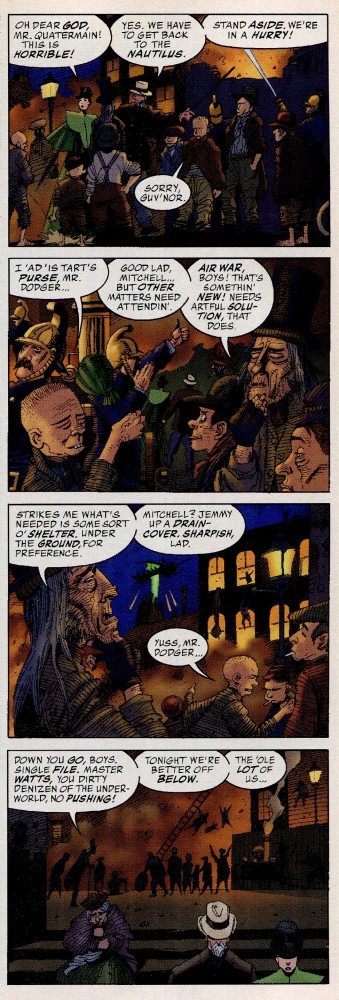
That’s Dickens’ Artful Dodger leading ancestors of the Watts and Mitchell families from The EastEnders while referencing the future Blitz of WWII.
This method of world-building is often seen as “fanwank” in certain circles; that is, it’s a way off—a private wink and nod to anyone following along or a prideful testament to the creators’ knowledge.
The references, though, are artfully amassed in such a way that they don’t impede the story. The antagonists of The Black Dossier, for instance, are a bunch of selfish, cruel spies working for British intelligence. Their names, their goals, their personalities, and their relationships are clearly established. Is there an extra layer to their words and interactions if you know all the ’50s espionage fiction they come from? Yes, definitely. That entire genre is a gap in my reading history, though, and I find the entire story perfectly compelling without that outside knowledge. The references don’t seem to be hiding any weaknesses in the storytelling.
So if it’s not for showing off, why build a world in such a way? It’s my opinion that the density of background references serve the subtly didactic goal of the whole series: teaching people how to be humane.
In a typical piece of fiction, crowds are faceless things that can serve a number of functions: setting detail, Greek-style chorus, or symbolic. They are usually distinctive from both protagonists and antagonists, who both regularly distance themselves from crowds for various reasons. In League, though, as soon as a background character is shown to be, say, the Artful Dodger, a reader might stop to consider each crowd member. What book are they from? How did they get from the events of their source story to the events of League?
This results in a sort of forced consideration, and even if a reader doesn’t want to figure out who each face in the crowd is, the implication of hundreds of stories, each with a different protagonist is there on the page.
If League is at least partly about empathy, where else can it be found? Many of the characters possess a distinct lack of empathy in one way or another: Nemo is a misogynist, Hyde is a murderer and racist, and Quatermain is so worried about his own life that he has to be talked into any unselfish acts. Wilhelmina Murray, however, the only character to appear in and survive all the non-Nemo books, is an understanding and compassionate person.
Murray, counted amongst the monsters of the team due to her victimization at the hands of Dracula and subsequent divorce from Jonathan Harker, is shown to be repeatedly empathetic to the sufferings of others, and she seems to be one of the few characters driven by a moral compass defined by keeping others from suffering. She’s appalled by the decision to bomb the Chinese-settled neighborhood of Limehouse in volume one, and in volume two, she shudders at the idea of using an engineered disease against invaders from Mars. She’s the only one who seeks to understand the murderous Mr. Hyde, which angers him to no end.
Indeed, as most of the League dies around her and the remainder, granted immortality, trudges on, Murray is the only one to adapt to the changing times as she meanders from 1899 to 2009. In the ‘50s presented in The Black Dossier, while Quatermain is terrified of robots and spaceflight, Murray is delighted. In 1969, while Quatermain and Orlando make fun Murray’s dress and how she has peppered her speech with contemporary slang.
This adaptability is seen as a weakness; Murray has failed to somehow stay true to herself. However, the characters that stay to true to some sort of externally defined morality, whether it’s the uptight superiority of the Victorian era or the “do what thou wilt” detachment that Orlando has developed since his birth in ancient Greece, end up looking foolish or, well, being killed. These philosophies all depend on an Other—for the Victorian men, it’s anyone who isn’t a white male, and for Orlando, it’s anyone who isn’t a laissez-faire immortal. Murray seeks to understand the Other and incorporate herself with them (and them with her).
Her power of understanding is often linked with the act of reading, which shows that empathy can be developed by both narrative fiction alongside fact. In volume one, she’s the only character who has read the stories of Nemo, Quatermain, and Sherlock Holmes. She’s the only one that reads all the files that the government assembles for the team, which always grants her an advanced understanding of the selfish goals of the men they work under.
This idea of the saving power of stories is further exemplified in the Blazing World, the half-there archipelago where the League has found refuge since the time of Prospero. The Duke of Milan holds the islands as a place to preserve the good and weird things that might inspire the world.
It’s a bit corny, but it’s an idea that comes up in a lot of Moore’s work (such as Supreme and Promethea). Interestingly, though, at the end of Black Dossier, the Blazing World has a visiting ambassador from the Lovecraftian Old Gods. These part crustacean, part octopus things have been recurring protagonists since the prose back-up in the very first volume and on through multiple vignettes present in Black Dossier. They exist as a sort of ultimate Other—beings from outside our universe whose geometries and psychologies we literally cannot understand—and worst of all, they keep trying to invade and take our place. But in the Blazing World, we can parley with these things, seek to understand them, and even come to peace with them due to the presence of all our good and empowering stories.
Back to Murray, there is one case where she seems less-than-charitable to the to the world around her. That era is 2009, when she, Orlando, and Quatermain are seeking to stop an apocalyptic plot. Mired in the fecklessness of the populace and the intense state security, she mentions that 1910 seemed better than the present.
Is this an example of failure of empathy? Is it a cultural critique on our modern times by famed crusty Moore? To counter those potentials, I offer that Murray was, from 1969 to 2009, confined to a sanitarium after suffering a bad trip at a concert. Orlando and Quatermain don’t even try to find her. Drugged and alone for 40 years, she hasn’t been able to adjust to the times. In her haze, she’s been reliving a strange trip to the moon (related in the text back-ups of Century), and she’s suddenly woken by the people who left her to rot and shoved into a frightening, new world. It’s enough to cause anyone to want to retreat to the past.
Speaking of Murray’s trip to the moon, it’s there, in those text back-ups, that Moore and O’Neill’s empathy fails. The pilot that takes Murray skyward is the Galley-Wag, an attempt at reworking the racist children’s story of the Golliwog. Both of the authors are on the record as saying that they wanted to reclaim the term and make it positive, but the Galley-Wag remains a black-skinned, thick-lipped stereotype who tries to have sex with every woman he meets. The history of the term and the problems with Moore and O’Neill’s approach are covered with impressive depth and knowledge at And We Shall March.
By the end of Century, the League has transitioned from a team composed mostly of men working for a male government into a group of mostly women in active rebellion against the government. The world of 2009 is very similar to 1899, at least when speaking morally. White men are still in power, still colonizing what they perceive as different, and still trying to hide any information that could tip the scales of power.
The world that Moore and O’Neill present from volume one through Century is a world that puts to bed the idea of societal advancement. That is, things are not getting better in the world, and we are not on a linear path to a nicer, smarter culture. No matter what social structures are created, someone will find a way to collect power and wield it violently.
What the League offers, at least in the case of Murray, is a way to exist inside a system that, overall, can’t really get any better. Murray’s selfless empathy and quest to better herself in the face of a world that has not gotten any better across her almost 200 years of life is a form of resistance. Whether she and the now-all-woman-League (except for Orlando, who is only sometimes a woman) has any effect upon the world at large remains to be seen. Is personal betterment enough in the face of oncoming fascism? Or do people have a responsibility to address the needs of those more prosecuted?
[Editor’s Note: So many words! Part two of this review will include a rebuttal of Murray’s attempts to change the world and an attempt to include people of color in the League universe that isn’t quite so clumsy as the Galley-Wag. Stay tuned, folks. ]
